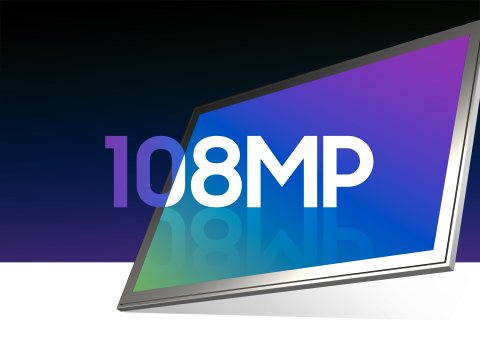Samsung ISOCELL HM3 comes in 0.8µm and with nine-pixel binning,
providing optimum brightness and enhanced auto-focusing
Smart ISO Pro and Super PD Plus fine-tune the sensor’s performance for premium mobile imaging experiences
SEOUL, South Korea — (BUSINESS WIRE) — January 14, 2021 — Samsung Electronics Co., Ltd., a world leader in advanced semiconductor technology, today introduced its latest 108-megapixel (Mp) mobile image sensor, Samsung ISOCELL HM3. With a wide spectrum of advanced sensor technologies, the HM3 can capture sharper and more vivid images in ultra-high resolution with faster auto-focus and extended dynamic range.
This press release features multimedia. View the full release here: https://www.businesswire.com/news/home/20210114005430/en/

ISOCELL HM3 - 108 megapixel image sensor (Graphic: Business Wire)
“While a pixel is just a single dot of color, when in millions, these dots can be transformed into stunning snapshots of life. With more pixels, images are sharper, with fuller details that can maintain their integrity even when enlarged. Samsung has been at the forefront of bringing the most pixels to mobile image sensors as well as various supporting technologies that take sensor performances to the next level,” said Duckhyun Chang, executive vice president of the sensor business at Samsung Electronics. “The ISOCELL HM3 is the culmination of Samsung’s latest sensor technologies that will help deliver premium mobile experiences to today’s smart-device users.”
The 1/1.33” ISOCELL HM3 with 0.8μm-sized pixels is a new addition to Samsung ISOCELL’s 108Mp product line-up.
For faster auto-focus, the HM3 integrates an improved Super PD Plus feature. Super PD Plus adds AF-optimized micro-lenses over the phase detection focusing agents, increasing measurement accuracy of the agents by 50-percent. The enhanced phase detection auto-focusing (PDAF) solution helps to keep moving subjects in sharp focus and delivers optimum results in dark environments.
In mixed light environments, such as at the end of a tunnel, the HM3 adopts Smart ISO Pro, a high-dynamic-range (HDR) imaging technology which uses an intra-scene dual conversion gain (iDCG) solution. Smart ISO Pro simultaneously captures a frame in both high and low ISO, then merges them into a single image in 12-bit color depth and with reduced noise. As Smart ISO Pro does not require multiple exposure shots to create a standard HDR image, it can significantly reduce motion-artifacts. In addition, with a low-noise mode, it improves the light sensitivity by 50-percent to capture brighter and clearer results in low-light environments than its predecessor.
The HM3’s pixel layout is especially arranged in three-by-three single color structures suitable for nine-pixel binning. By merging nine neighboring pixels, the 108Mp HM3 mimics a 12Mp image sensor with large 2.4μm-pixels, heightening light sensitivity when taking photographs in low-light environments. With an improved binning hardware IP, the HM3 supports seamless transitions between 108Mp and 12Mp resolutions.
Designs of the new sensor has also been optimized to reduce energy usage under preview mode by 6.5-percent, offering added power efficiency to the overall mobile device.
Samsung ISOCELL HM3 is currently in mass production.
About Samsung Electronics Co., Ltd.
Samsung inspires the world and shapes the future with transformative ideas and technologies. The company is redefining the worlds of TVs, smartphones, wearable devices, tablets, digital appliances, network systems, and memory, system LSI, foundry and LED solutions. For the latest news, please visit the Samsung Newsroom at http://news.samsung.com.
# # #
* Editor's Note: Actual performance may vary depending on device and user environment.
* Samsung first announced its ISOCELL technology in 2013, which reduces color crosstalk between pixels by placing a physical barrier, allowing small-sized pixels to achieve higher color fidelity. Based on this technology, Samsung introduced the industry’s first 1.0um-pixel image sensor in 2015 and a 0.9-pixel sensor in 2017. Samsung continues to enhance its pixel isolation methods with ISOCELL Plus and the ISOCELL 2.0 technologies.
View source version on businesswire.com: https://www.businesswire.com/news/home/20210114005430/en/
Contact:
Ujeong Jahnke
Samsung Semiconductor Europe GmbH
Tel. +49(0)89-45578-2092
Email:
ujeong.j@samsung.com

